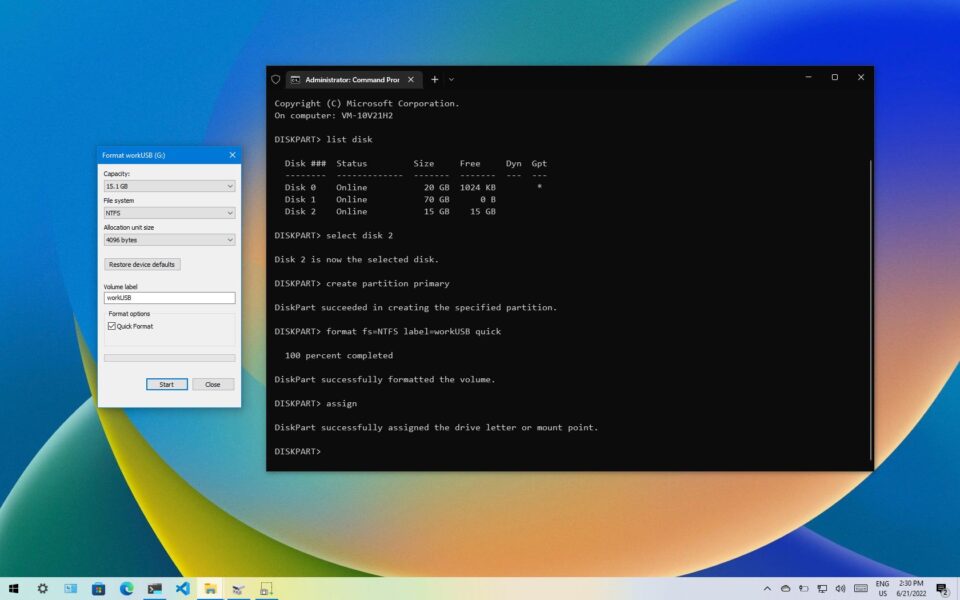Microsoft NTFS formatted drives are often referred to as “fault-tolerant” files. They’re also known to support journaling and large files. Whether you’ve used NTFS or not, you should know how to recognize if your disk is formatted with this type of file system.
NTFS is a Fault Tolerant File System
NTFS is a highly reliable file system, which incorporates built-in fault tolerance. This means that it can recover from error conditions when a hard disk fails and will continue to operate properly. It does this by recording changes to the hard disk in a log file. This log file is used by Windows NT when it needs to repair data.
NTFS is a popular file system, and it’s used in most versions of the Windows operating system. It’s also popular on external drives, and it can support large files and partitions. In fact, on Windows Server 2019, NTFS is capable of supporting up to eight petabyte volumes, which is about sixteen exabytes minus one kilobytes. NTFS is one of the two main file systems used by the Windows operating system, but it’s supported by other operating systems as well. For example, Mac OS supports NTFS read-only, and it can also work on external drives.
NTFS allows users to manage permissions on individual files and directories. It also supports spanning volumes, which means that directories can be spread over multiple hard drives. Nevertheless, NTFS is not for everyone, especially if you’re running an older operating system.
NTFS is also secure, with the ability to protect files that are restricted and linked to each other. The file system also allows files to be renamed without breaking the links. Moreover, NTFS allows users to enforce space limits at the file system level.
NTFS is also a journaling file system, meaning it maintains a log of all operations performed on the disk. This helps users recover from errors quickly. It also allows a user to create a shadow copy of an important file for later use. Furthermore, NTFS supports encryption. This prevents unauthorized access to the contents of a file. Moreover, it supports public key security, which makes it a highly secure file system.
NTFS is also very secure, which makes it an excellent choice for critical servers and other systems. It also has the ability to support volumes up to 16 exabytes. In addition, the filenames on NTFS volumes are long and Unicode-compliant, and it also supports multi-streaming and fault tolerance. Moreover, NTFS is less prone to file fragmentation than FAT.
It Supports Large Files
microsoft ntfsformattedwarren theverge is a file system that uses the Master File Table (MFT) structure to organize data. It also supports algorithms to minimize disk fragmentation. Each directory entry contains a filename and a unique file ID (inode number), which is a record in the MFT. The file ID also contains a reuse count, which detects stale references to the file. The file ID strongly resembles the W-FID in Files-11, although other NTFS structures are significantly different.
It Supports Disk Quotas
Disk quotas are a powerful feature that administrators can use to control user storage space. Quotas can be set to limit how much data a user is allowed to store and can even log an event if a user reaches their disk space limit. These limits are effective for office and home environments.
Disk quotas are an important feature of NTFS, which allows a business to control the amount of storage space a user can use. The system also provides file system journaling, which keeps track of changes. Disk quotas also allow administrators to control user access to data and files.
NTFS is a file system that allows users to store and access files with large file sizes. It is the file system used by Microsoft’s operating systems from Windows XP to Windows Server 2019. On Windows 10, NTFS supports disk quotas, which help prevent data growth in excess of disk space.
When a user requests to change the file’s name, NTFS can enforce a disk quota. This feature is used by online backup services and software tools, as well as by Windows itself. This feature allows developers to create applications that both succeed and fail, and does not run the risk of accidentally applying changes that didn’t work.
Another benefit of NTFS is its support for large files. For example, an application that uses three GB files requires 25GB of disk space. However, when using sparse files, this file size can be as small as 22GB. This way, the user can enjoy the full benefits of the program while still maintaining disk space quotas.
It Supports Journaling
Journaling provides a level of data protection that can help protect your data if the operating system fails. It can help your backup process as it logs changes to the file system before they are made. NTFS also supports preemptive journaling, which prevents data loss during disk changes. This ensures that you can undo or redo changes if necessary. As well, a journaled file system relays changes until the file system is restored.
Another benefit of using a journaling file system is that they are resilient to catastrophic failure. For example, a sudden removal of an NTFS-formatted USB drive can cause it to get corrupted. Though the file system data structure will remain intact, the user data will have been corrupted. Fortunately, NTFS can recover from this sort of a shock.


